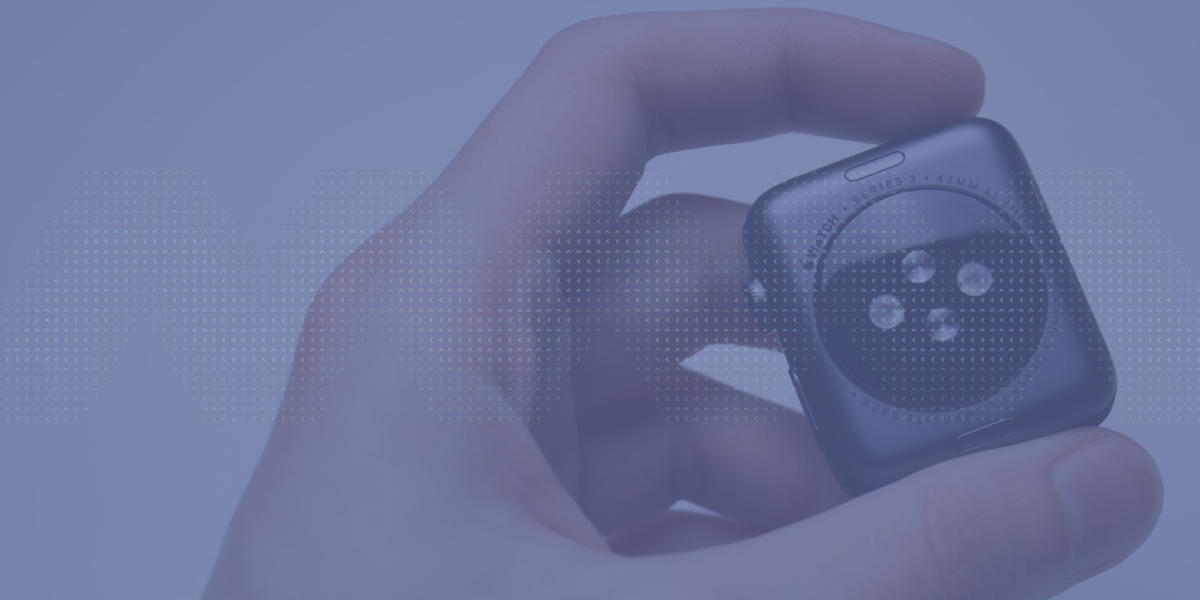Are wearables starting to be accepted as medical-grade tools?
Mar 11, 2020

When they first hit the market, wearable health devices were little more than toys, at least from a physician’s perspective.
For several years, doctors rejected the use of such tools (sorry early Fitbit, Garmin, and Whoop adopters) in their practices. They weren’t convinced wearables were measuring health metrics accurately—and what’s more, they were reluctant to add more data to the torrent already pouring into their practices.
However, consumers have grown more attached to using wearables to track stats and keep themselves well. And the percent of US users climbed from 9% in 2014 to 33% in 2018, according to Accenture. With ordinary people spending $300+ out of pocket for an Apple Watch, it’s hard to argue that smart wearables have reached the mainstream.
Aware of this upsurge of patient interest, medical device makers are beginning to offer new types of wearables technology that look and behave like consumer wearables but also deliver high-quality medical data doctors can use to manage patients remotely.
Here are some ways in which these consumer-friendly, doctor-approved medical wearables are likely to evolve and grow in importance to the care process over the next few years.
Supporting day-to-day clinical decisions
Next-generation health trackers are more trustworthy than the consumer health bands that popped up a decade ago, with a growing number receiving FDA clearances. As a result, physicians are able to use the data they generate to make small but important tweaks to a patient’s care, such as incremental changes to their medication regimen. In addition, clinical decision support can be a big help to doctors when specialized care is important but difficult to deliver, such as managing heart failure or monitoring pregnant women who live in rural areas.
Leveraging healthcare AI to help generate answers
In previous times, medical devices would collect data but didn’t have the means to suggest diagnoses or solve complex problems. Today, however, device makers are integrating AI into their wearables platforms and leveraging it to find and respond to subtle changes in patients’ health data. Not only do the devices feed physicians data, but they also leverage technologies such as deep neural networks or machine learning to help them interpret the data effectively. As these systems “learn” more about the patient, they become increasingly capable of alerting doctors when patients, for example, experience changes in their blood pressure or heart rhythm.
Turning smartphones into medical devices
While developers have been working to make their health apps more useful for quite some time, few of their efforts have been successful until now. Increasingly, medical wearable device vendors are making smartphones the linchpin of high-end monitoring efforts by plugging devices into the phones and supporting those devices with specialized apps. In fact, building remote monitoring systems around a smartphone app is becoming the default approach to managing these platforms.
Tracking multiple data points
In the past, the remote tracking devices patients brought home relied on a single source of data, such as a heart rhythm recording. Today’s wearables, however, often come as part of a family of smart devices that capture multiple kinds of data such as blood pressure, weight and blood oxygen levels. These more comprehensive views of patient status can improve doctors’ ability to treat patients both immediately and in the long term.
Enriching big data stores
Over the last 10 years, hospitals and clinics have become increasingly interested in predictive analytics, an approach that requires them to compile large datasets. Initially, providers focused almost exclusively on taming data drawn from in-house sources such as EHRs and claims databases, but this is changing rapidly as the quality of data from wearables improves. These added sources of data will fuel practices’ predictive analytics capabilities as well as giving AI tools more information from which to learn.
In the future, look for wearables to become part of the business of daily living, with medical sensors embedded in our shirts, our socks or even our cars, as providers find ways to take advantage of novel and mobile data sources. What was once a wildly speculative idea – that doctors could track patients virtually anywhere they go – is close to becoming a reality.
